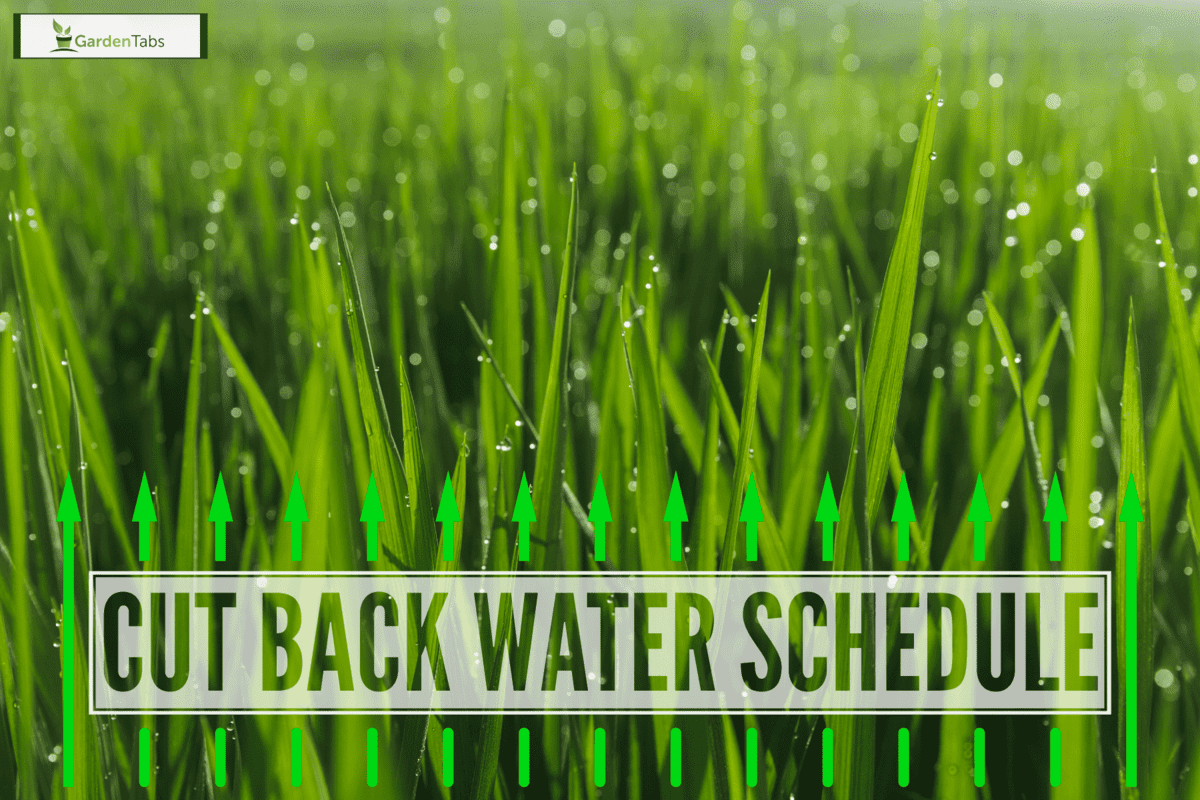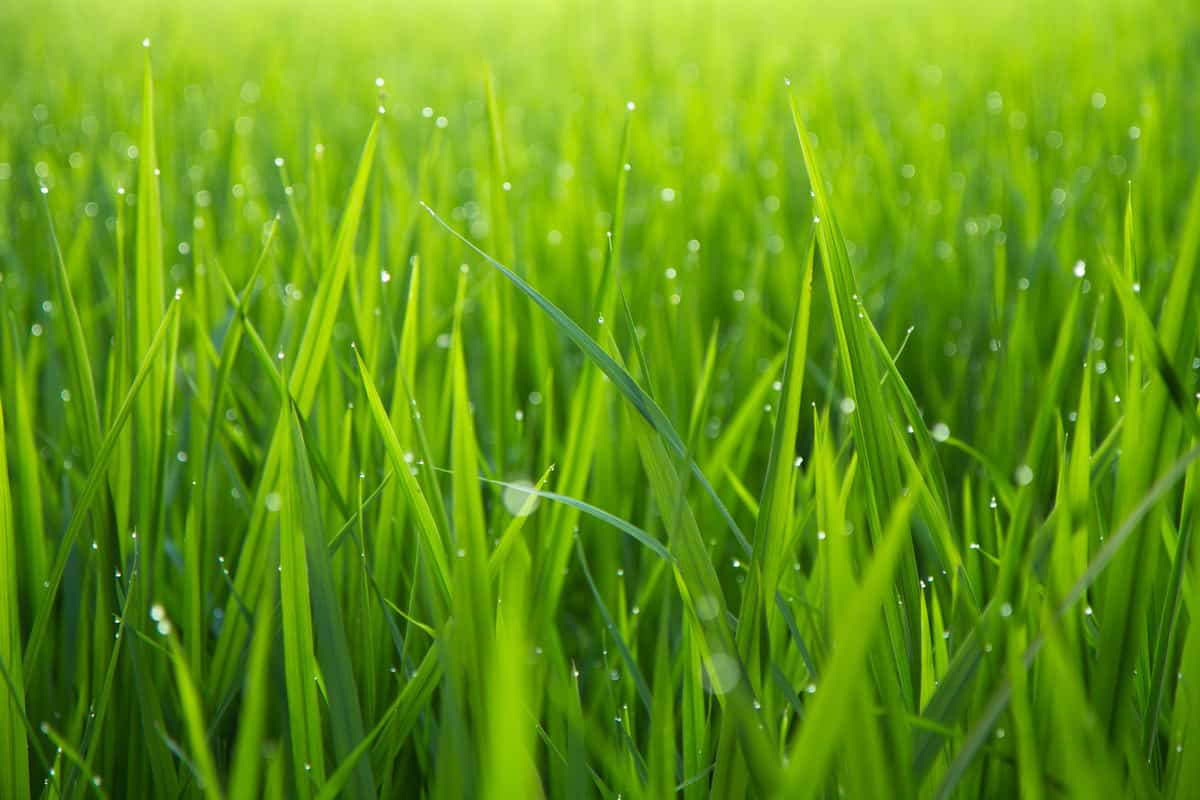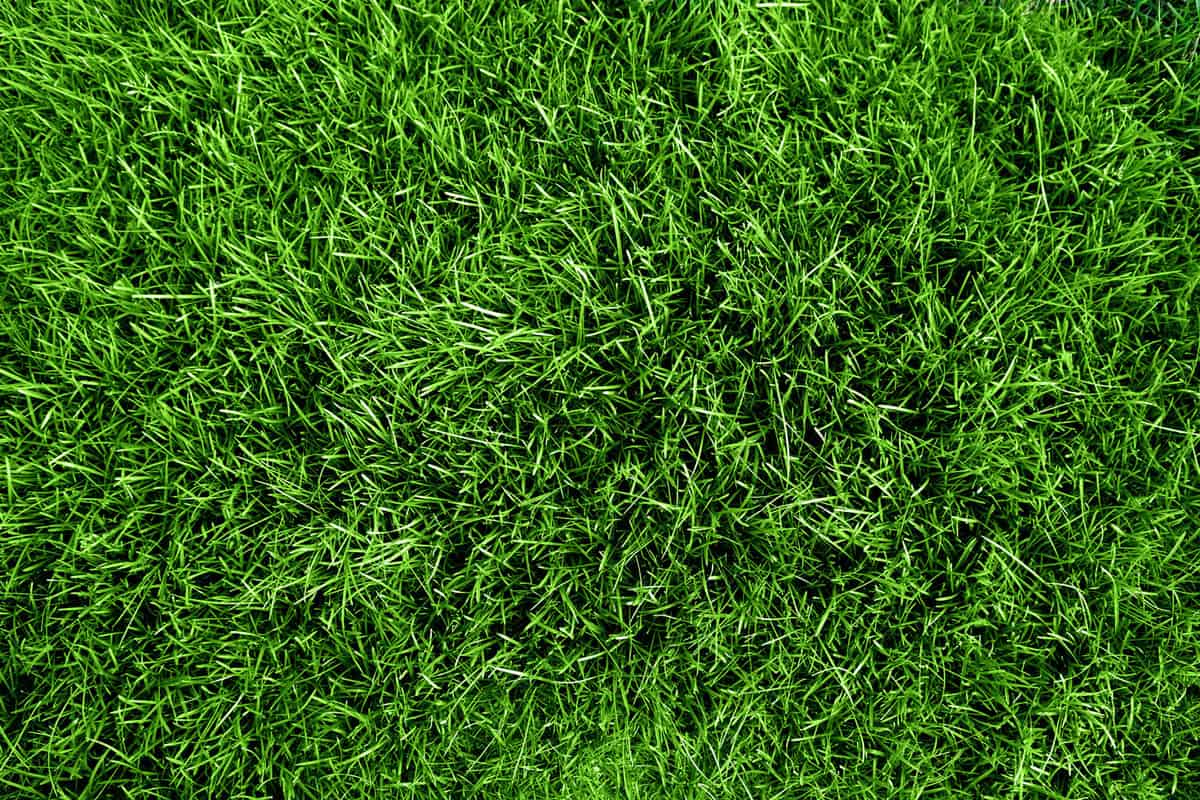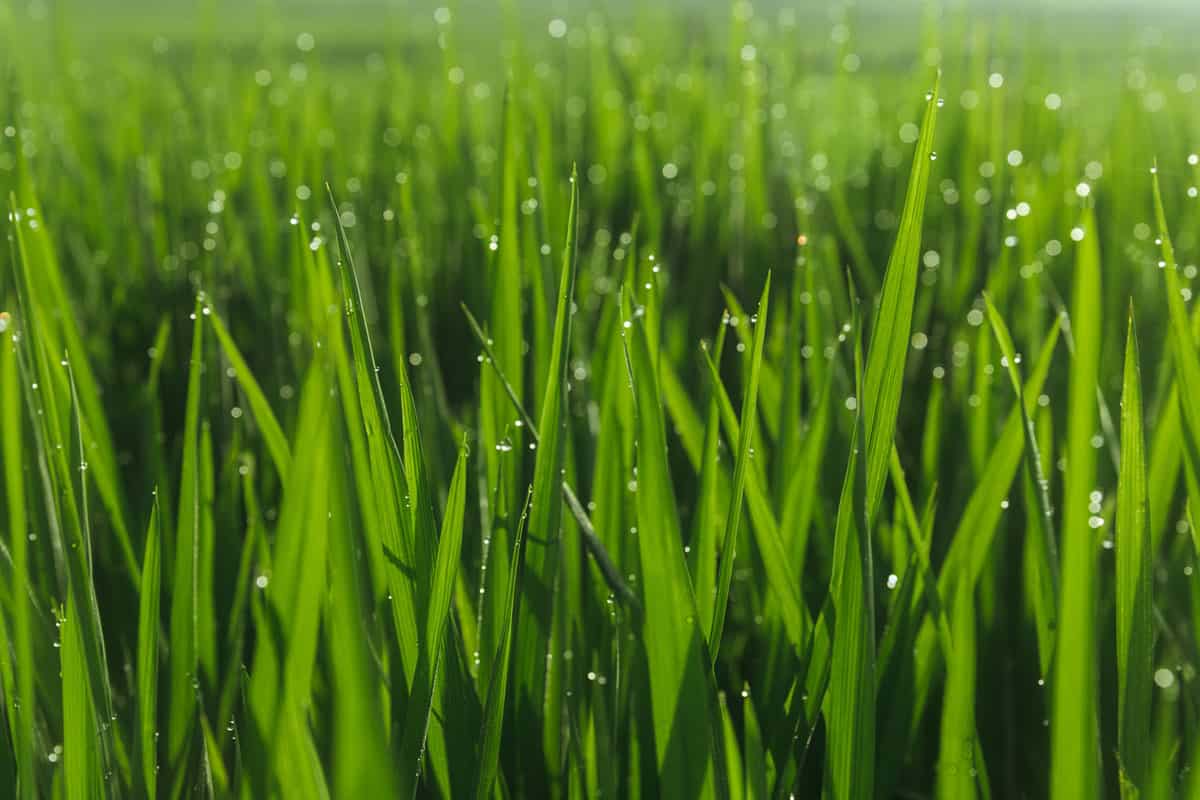Finding new ways to manicure a garden can make a world of difference. Do you have grass growing in the front or back of your home but notice it won't stand up straight? What is causing this to happen? Luckily, we've done extensive research into these questions and have the answers below. Let's discuss!
One of the main reasons grass will curve or appear droopy is that it's overwatered. To fix this, you want to cut back on your watering schedule, which should get your grass back to an upright position.
Furthermore, your grass may need to be raked. Giving your lawn a light raking will help prop up each grass strand, ultimately improving its overall look.
As we begin, we will cover all things droopy grass and show you how to get your lawn looking perky. Whether you recently planted your grass or have had this happen before, we're here to assist. With that said, let's dive right into this post!

Why Won't My Grass Stand Up Straight?
If you notice your grass appears droopy, this could be for various reasons. As we covered, one of the more common causes of this problem is overwatering.
When grass becomes too moist, it is more susceptible to drooping and disease. So to avoid this, only water your lawn when it looks dry, or create an evenly spaced watering schedule.
Additionally, if you haven't raked your lawn in a while, that could explain why it won't stand straight. All you need to do here is grab a rake and lightly go over the affected areas.

However, you want to be careful, so you don't tear out any healthy foliage.
Another reason grass doesn't stand up is that it is too long. Typically, as your grass gets taller than three inches, it tends to droop or fall over. So, the next time you mow, make sure to cut it a bit shorter, which should keep it perky.
If you try all of these remedies to no avail, your grass could be sick, which in that instance, you should call a lawn care specialist.
Can You Fix Drooping Grass?
Yes, in general, you can fix drooping grass. As we covered above, there are various ideas here, although you need to find the root of the issue first.
Sometimes, the climate will also affect how lush and healthy your grass appears. For example, if it is hot and dry, you may notice your lawn drooping during the day.
The same goes for extra wet days/seasons. The more water your grass gets, the heavier each blade will be, resulting in droopiness. Again, this won't be permanent, so don't panic if it recently rained.
Another idea for lawn maintenance, regardless of whether your grass stands straight, is to rake regularly. Doing this can weed out any extra debris from your lawn, which should prevent any dead patches or irregular blades of grass.
Furthermore, if your grass is droopy and looks sick, it may have a pest or disease present. As we mentioned, the wetter grass is constantly, the more prone to issues it becomes, so too much water isn't a good thing.
Is It Normal For Grass To Grow Crooked?

Like most plants, it is normal to see irregularities with your grass. Although it isn't normal for all your lawn to be crooked, a few sections having one pattern versus the next being slightly different is entirely natural.
In general, how you plant your grass can affect how it grows. For example, did you lay down lawn netting to secure your seeds? What if you didn't add a net?
These things can all affect the direction, pattern, and fullness of a lawn's final look. So if you notice large sections of grass growing sideways or dropping over, you may want to grab a rake and monitor that section over the next few weeks.
Your lawn may be underwatered too, so if the drooping is accompanied by wilting/discoloring, you should grab a hose.
Why Does My Grass Grow So Uneven?
Following crooked grass, it's also common to see specific areas of your lawn look better than others. For example, if you notice patches of dead or unhealthy grass and others thriving, this could be for two main reasons.
First, too much water can cause an uneven lawn. As we mentioned, water plays one of the most crucial roles in grasses' appearance, so too much or too little can cause trouble.
Let's say your lawn sits on uneven land. If you overwater, most of the excess moisture will likely pool in lower sections of your yard. That will cause the grass in that area to wilt, discolor, and even die.
Next, uneven exposure to sunlight can cause your lawn to look wonky. For example, if half of your grass gets six hours of direct sun each day while a structure or tree partially blocks the other, it may only get 3-4 hours.
That will result in uneven color, thickness, and overall health. The sun is essential for lawns of any age, so if a huge tree or building shade part of your grass, expect it to grow slower than the non-obstructed section.
Will Fertilizing Grass Make It Stand Straight?

If you have tried everything to get your grass to stand straight and nothing works, fertilizer may be the best idea. Usually, applying a fair amount of fertilizer to troubled grass can give it a much-needed boost.
However, you don't always need to fertilize grass to make it stand straight. As we covered earlier, watering, sunlight, and maintenance are typically the culprits here.
On top of that, fertilizing grass too often isn't a good thing. If you go overboard with a product, your grass will likely die or become burned. We recommend creating a routine fertilization schedule rather than using it whenever your grass droops or looks unhealthy.
Grass tends to do best with consistency, whether that is your watering schedule, fertilizer, mowing, or even how often you rake.
Why Does My Grass Look Bad After Fertilizing?
Adding to our previous point, too much fertilizer isn't generally good. If you fertilize a lawn too much or too frequently, the salt buildup can cause "fertilizer burn."
Not only will this cause sections of your grass to change color: but it can also kill it entirely. Even natural, low-strength fertilizer will have potent ingredients, which can cause burning to occur.
To prevent this from happening, we recommend using a slow-release, mild fertilizer on your lawn every 6-12 months, which should keep your grass green, lush, and healthy.
Think of fertilizing products like coffee or an energy drink for us. If you drink too much caffeine, your body can go into overdrive, ultimately crashing.
That is exactly what over-fertilizing grass will do, except your grass may not bounce back as fast/easily.
Is My Grass Too Tall?
One of the reasons your grass may start to droop is that it's too long. Ideally, you want your grass to stay under three inches, although some varieties prefer to be longer/shorter.
According to experts, cool-season is typically about 2 1/2 inches. They also recommend removing the top 1/3 of the grass blade each time you mow.
Maintaining a regular mowing schedule can make a huge difference in how a lawn looks and grows. For example, your grass can look unhealthy simply because it needs to be cut, so this is an easy fix.
Furthermore, the longer your grass is, the more likely it will topple over, so don't be afraid to give it a trim. Again, you don't always need to be exact with your measurements, but try to create a consistent mowing schedule and keep your grass at or below three inches.
Can You Mow Your Lawn Too Much?
Yes, it is possible to over-mow your grass. Typically, when you mow a lawn too frequently, it can cause the grass to grow unevenly and discolor and thin out.
Having your grass blades too short can also cause bald or dead patches on your lawn. For that reason, you want to mow 1-2 times per week if it's springtime and your grass needs it, but this can vary by variety and climate.
For example, cool-season grass like Tall Fescue and Kentucky Bluegrass needs to be mowed about two times per week in the spring and fall. On the other hand, warm-season grass, like St Augustine varieties, only need one mowing per week during their peak growing season.
So all grass is different, meaning you need to maintain yours accordingly.
How Much Water Does A Lawn Need?

Generally, a lawn will need about 1-1.5 inches of water each week. That can be from either rainfall or a hose/sprinkler system, so you may not need to manually water if it's wet outside.
According to Scotts, you can either give your grass the 1-1.5 inches of water in one watering or space it out between two times. Every lawn reacts differently, so some may prefer one significant watering, while other grasses may like 2-3 separate occasions.
To Wrap It Up

Whether you have grass currently growing or want to plant some, knowing how to maintain and manicure it is essential. From what we found, an easy way to ensure your grass stands up straight is to avoid overwatering it.
You may also want to use a rake to help your grass blades stand upright. Furthermore, if your lawn gets varying amounts of sunlight, that could explain the drooping. Every yard is different, so you may need to get creative.
Regardless, create a routine watering, fertilizing, and mowing schedule, and don't forget to keep your lawn below three inches to prevent droopiness.
Made it to the end? Check out these helpful related lawn posts below!
When Does Bermuda Grass Grow? [And When Does It Go Dormant?]
